At first glance the cemetery in Mostar looked like any other. Nestled alongside a mosque and on the main road heading out of town, this quiet corner of the old city would be unremarkable if I hadn’t looked a little closer. As I started to wander among these tall white stones the enormity of the tragedy that had hit this region suddenly struck home. Every soul in that graveyard had died in the spring and early summer of 1993. One tiny grave even bore the dates ’1993-1993′.
We found many similar cemeteries on our visit to Sarajevo a couple of days before. Here the dates were a little wider (1992 to 1995) although the number of grave stones ran into their thousands. Indeed standing on a hilltop overlooking the city I was reminded of our visit to the WW1 battlefields of Flanders, such were the number of cemeteries that we could see. Yet these were civilians, ordinary people who just happened to be the wrong religion or the wrong ethnic grouping when their doomed Yugoslav nation fell apart and turned in on itself.
Over 100,000 died in a four year war that pitched neighbour against neighbour and friend against friend, in a tragedy that resulted in mass evictions, rape camps, massacres and horrendous human suffering for the people of this troubled region. While the vast majority of victims were Bosniaks (Bosnian Muslims), atrocities were commited on all sides and by all sides.
We came across a series of harrowing exhibtions, in Sarajevo and later also in Dubrovnik that attempted to recall the personal stories of the conflict. These provided photographic and written accounts on how people suddenly and without warning learned at first hand how humans have the ability plunge to the depths of depravity. It was very uncomfortable to witness these sights and not unlike visiting the Nazi concentration camps or the Khmer Rouge killing fieds. Just as in the case of those horrors, this conflict has now formed an indelible stain on our collective failure to co-exist in peace. Yet these reminders serve a valuable role in ensuring the world never forgets.
People we spoke with were understandably reticent to recall their experiences. Three years under siege in Sarajevo or life under the mortar attacks of Mostar and worse does not provide memories that you want to share with strangers. “We survived, thank God” was a commonly heard phrase. But for evidence of the conflict one does not need words. Sarajevo has many bombed out shells of buildings; those where reconstruction has yet to start. The famous ‘Sarajevo Roses’, mortar holes in the pavements that were filled symbolically with red paint, are now a rare sight but can still be found. And so many buildings in the centre of both Sarajevo and Mostar are pockmarked with bullet holes, tiny gifts from the snipers that might not bring down a building but that threatened to destroy an entire city’s ability to survive.
Perhaps no single structure symbolises the stupidity of the war more than Mostar’s famous Old Bridge. Built in the 16th century, it had withstood so much and served as one of Europe’s crucial crossing points throughout many wars and changes of government. Yet it was no match for the heavy artillery that destroyed it in November 1993. Being widely regarded as one of the world’s most beautiful bridges was not enough to save it from destruction, as its strategic importance rendered it a prime target that needed to be removed; such was the warped thinking that had taken hold by that time. The powerful clip below though quite long is well worth watching, and shows the footage of the moment the bridge was destroyed.
Yet while the loss of a historic bridge is a tragedy in itself and a powerful symbol of the futility of this war, it is perhaps not right to cry over a bridge when millions of lives were destroyed forever. The bridge is now restored to its former glory. For the people of the city that straddles the Neretva river their emotional restoration, if it can ever truly be achieved, will take a lot longer.
As a footnote, if there was ever a place where I have been heartened to find mass tourism, it has to be Mostar. While the Old Bridge is now packed with cruise ship daytrippers from Dubrovnik, it is impossible not to feel a sense of relief for the people of Mostar that, on the surface at least, things have returned to something approaching normal. More on Mostar and Sarajevo (without doubt one of my favourite European cities) coming up.





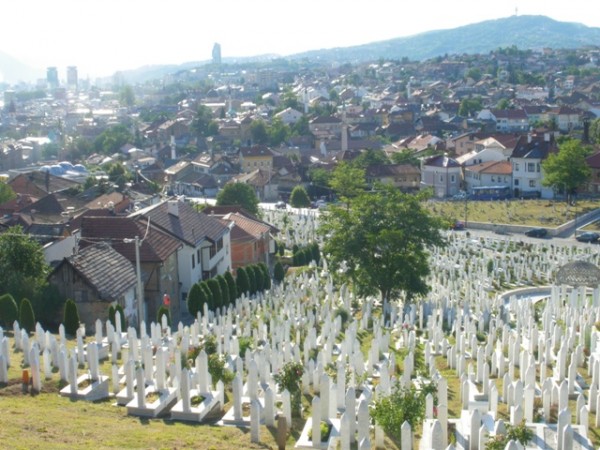
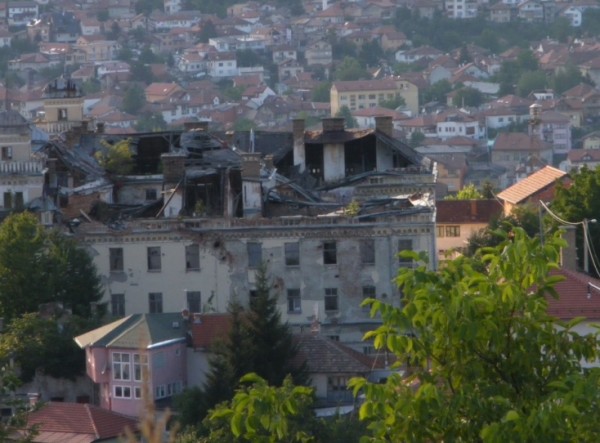
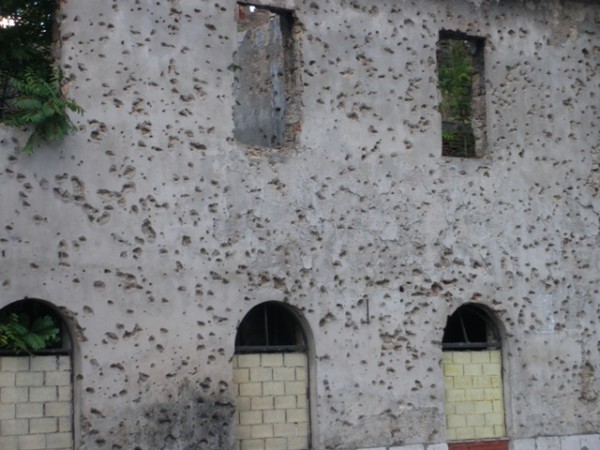
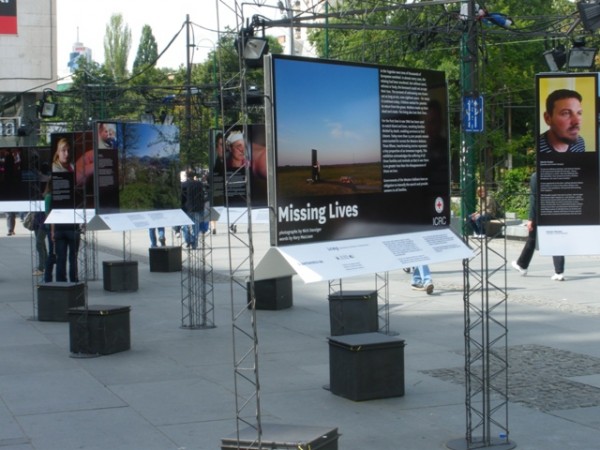
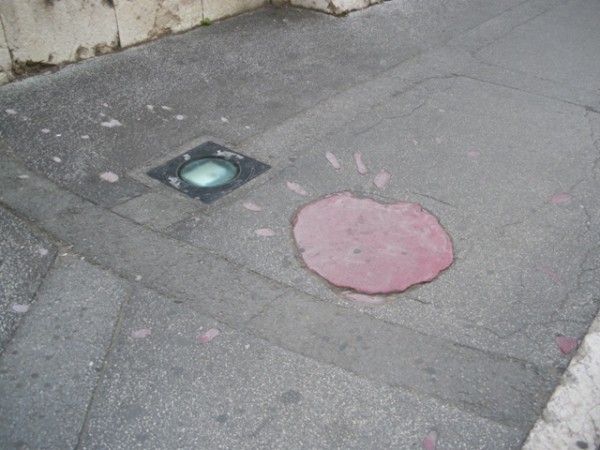
I’ve numerous photos and videos of the war in Bosnia even as a kid in the early 90s. Now as an adult, it is still beyond me how and why things like these still happen at this day and age. I can’t believe it been almost 2 decades already.
Thanks for the insightful piece.
PS. By the way, glad to see a fellow copywriter here who also likes to travel.
Thanks Cedric. It is incredible to believe it happened, especially now that the old adversaries are living side by side again.
Enjoyed your website by the way
Andy, Moving stuff.
It never ceases to amaze me how quickly destinations can change from being on the tourist map to being a conflict zone. Then back again, to hosting tourism.
The lives of the people affected by the conflicts, is a much more important story, than stones formed into a bridge. Thank you for covering this aspect of our very recent history.
Hey Andy – I wrote up a little piece about this post (and your blog) over at my site – here’ the link.
http://www.describetheclouds.com/?p=169
Enjoy!
That video was really hard to watch. In fact, I think it might be better if I don’t try watch it again at work as it has made me quite ill.
This is the most incredible post and has made me more determined than ever to visit these places (and soon!). I had had a long obsession with the ex-Yugoslavia (my best friend in high school was Croatian and we lost touch in 1993) and my own visit to Serbia consolidated that obsession. Thank you for such a well-written and poignant post.
Thanks to all for the kind comments. Agree with you Emm that the video makes very difficult viewing (if you just put Mostar into a YouTube search there are plenty more horrors to witness – the consequence of a war fought in the modern age). Certainly well worth visiting, and as they are reconstructing so much and so quickly I imagine the cities will look very different in 5 years time.
John, like you I think the tourism revival in this region is a remarkable story. Dubrovnik had an even more dramatic recovery. It’s hard to believe what went on there, less than 20 years ago.
Andy,
I think the strength in what you wrote here is in the piece’s context. It would have been very easy to gloss over the history. And really, as a travel writer, the natural thought is to avoid the history as it seems too obvious. For example, when writing a guide to Vietnam, is there ever any need to say “despite the country’s war-torn history”?
I think this debate proves the value of blogs in providing useful/ invaluable contextual info for travelers. Your final part where you note “on the surface at least” is a well measured way of approaching the problem.
Having spent a lot of time in this country, I can only presume that the bigotry, which underpinned ethnic tensions post-war, still remains. I sincerely hope it has lessened and a more progressive generation is able to moderate what are deep-seated ethnic and political difficulties.
Anyone wishing to travel through this region should take a look at Prijidor/ Sanski Most and the routes between the two.
Such a wonderful country, but please let’s not patch over the bullet holes – they tell a tale that sometimes words cannot.
Best wishes
Mp
Thanks Mark. It’s my fascination with history that was partly responsible for us landing in this part of the world in the first place, so I guess we were always going to look at the signs of the recent conflicts.
Like you, I can’t believe such deep rooted resentment and mistrust between communities can just evaporate, especially in light of these events. Yet people are learning on some level to co-exist again, even among the bullet holes and bombed out shells of buildings.
Are you tempted to return to Bosnia to see it 15 years on?
Thanks again for sharing your thoughts.